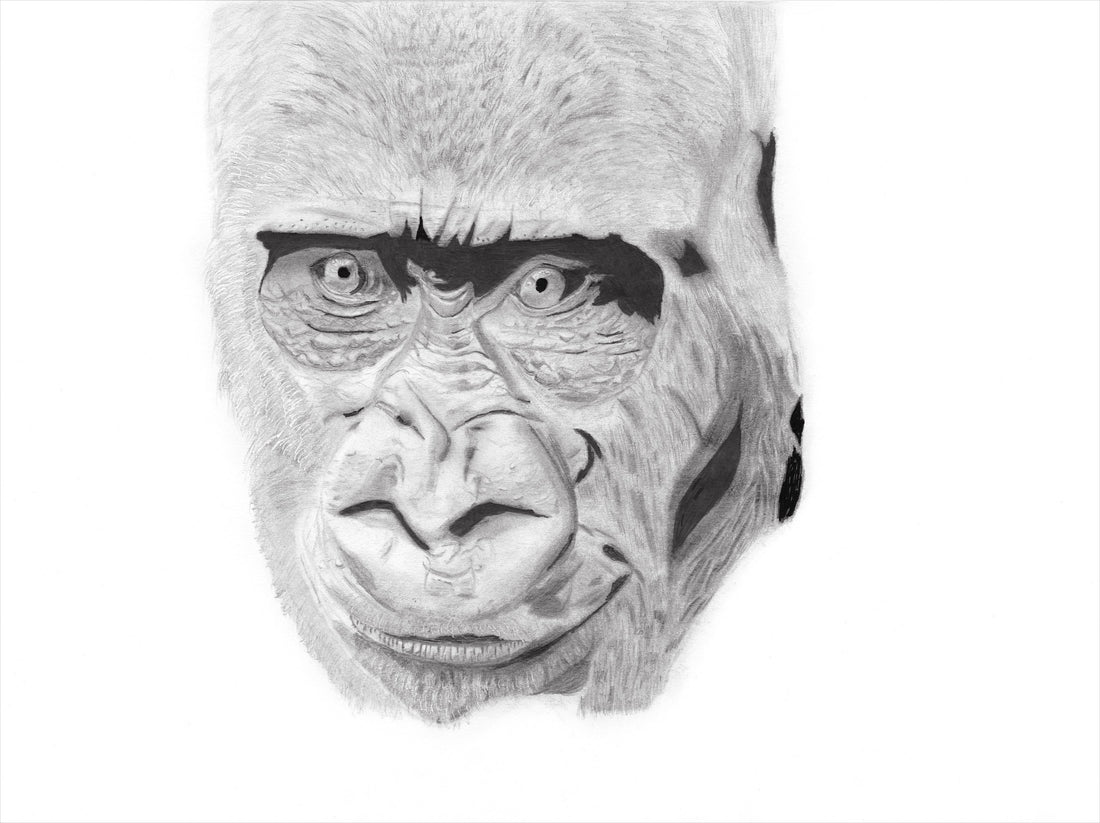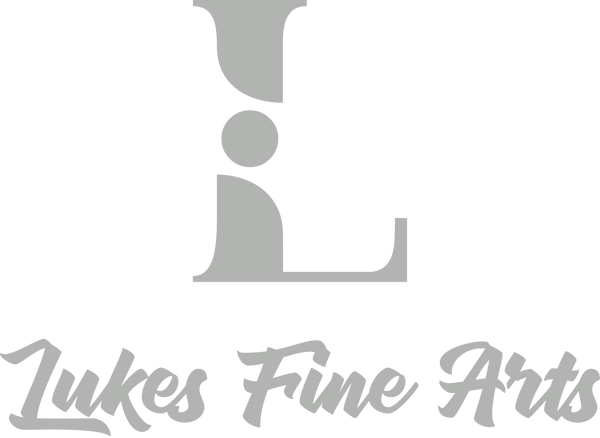
From Smudge to Magic – How to Fix a Drawing That’s Gone Wrong.
Share
Hey there! I’m Luke Lewis, and I run Lukesfinearts, where I help artists of all ages unlock realism and push through creative roadblocks. If you’ve ever found yourself staring at a drawing that’s veered off course, don’t worry—you’re definitely not alone. A stray smudge or a misplaced stroke happens to all of us. The good news? Fixing it doesn’t mean starting from scratch. In today’s blog, I’ll walk you through how to recover your artwork, correct mistakes, and even turn them into something better than before. Let’s dive in and get you back on track to creating your best work!
Before we get started? Would you like a free worksheet to hone your shading skills? Well look no further, click this link below 👇 👇 👇 and download this free worksheet today! But Luke why give this away for free? Is it a crappy resource?? Not at all! I put in 100% effort into everything I do so you, the artist can grow! The reason it's for free is because I believe in you as an artist and I want you to grow. Do I have paid content?? Absolutely! I still need to live! But I absolutely don't mind handing out free resources to take your journey to the next level! So click the link, download the content and enjoy!!
https://cdn.shopify.com/s/files/1/0748/7989/3822/files/is_it_done_checklist.pdf?v=1752788411
Oh and one more thing! If you do like it, could you give me 1 minute of your time to leave me a review, your words of appreciation not only spread the word to others, but also let's me know that I'm going in the right direction!
So without further ado, let's jump straight in and learn how to shade better than ever before!
What you’ll learn today
In this blog, we’re going to explore how to take those frustrating moments—smudges, light patches, and “ruined” areas—and transform them into part of your creative process. You’ll learn how to use a kneaded eraser to turn stray marks into soft shadows, how to layer graphite effectively to bring contrast and depth, and how reframing or cropping can actually enhance your drawing. I’ll also share some personal stories where my own mistakes taught me valuable lessons that made my work better in the long run. Whether you're just starting out or have years of experience, these strategies will help you turn artistic hiccups into opportunities for growth and expression.
Turn smudges into shadows and save your artwork
Let’s be honest—when you first see a smudge or an accidental mark on your drawing, it can feel like the end of the world. But here's the thing: mistakes aren't always the enemy. In fact, they can be the spark that leads to something far more interesting than what you originally planned.
I remember working on a portrait once where a bit of graphite accidentally smudged across the cheek. In fact it was in the picture of this blog, (it is why I picked that picture in the first place! At first, I panicked, thinking I’d have to start all over. But instead, I used a kneaded eraser to soften it, added a bit of shadow under the cheekbone, and—just like that—it gave the whole face more dimension. That mistake ended up being one of the best parts of the piece.
Kneaded erasers are brilliant for this kind of recovery work. Unlike traditional erasers, they’re flexible and don’t leave crumbs behind. They allow you to control how much graphite or charcoal you lift, giving you a subtle way to fix or enhance your drawing.
Here’s how to use a kneaded eraser to work with your mistakes, not against them:
-
Lightly press the eraser: Gently tap it on the smudge to lift excess graphite—avoid rubbing to prevent damage.
-
Shape the eraser: Mould it into a point or soft edge for more control in detailed areas.
-
Create soft shadows: After lifting the smudge, shape it into a faded shadow and blend it gently.
-
Add highlights: Lighten select areas to create highlights that flow naturally with the surrounding tone.
-
Refine and blend: Use a blending stump or your finger to soften any harsh lines and ensure a smooth transition.
Layering graphite to hide light areas and control contrast
Once the smudges are under control, the next step is regaining contrast. Good contrast is all about having a full range of tones—from soft lights to deep darks. It’s this variation that makes a drawing really pop. Without it, everything looks flat and lifeless.
When I first started drawing, I was obsessed with going darker. Every time I wasn’t sure what to do next, I’d just darken things more. Eventually, I’d end up with a big, smudgy mess—no light areas, no variation, just one big patch of black. It took me a long time to realise that contrast isn’t just about adding shadows—it’s about balancing light and dark.
By switching constantly between building light and dark areas, you gain a much clearer understanding of what the drawing needs, rather than what you think it should look like. Working gradually gives you control and lets you develop a drawing that has depth, atmosphere, and clarity.
Here’s how to build up graphite the right way:
-
Start with soft pencils and apply light, even layers.
-
Use gentle strokes and avoid pressing hard—you can always add more, but taking it away is harder.
-
Gradually build up your darks, but don’t ignore the light—leave space for highlights to shine.
-
Use a blending stump or tortillon to smooth transitions and unify your tones.
-
For overly light areas, layer around them, or softly darken them to better match the surrounding tones.
Transform a “ruined” area by framing or cropping
Sometimes, despite your best efforts, there’s a part of the drawing that just doesn’t work. Before you scrap the whole thing, consider this: you might not need to fix it—you might just need to reframe it.
Framing or cropping a drawing can completely change how it’s perceived. Even more importantly, it can help you create intentional focus in your work. One of the key elements of good composition is contrast not just in tone, but in detail. If every inch of the page is packed with intricate line work, the viewer doesn’t know where to look.
I once did a drawing where I spent hours refining every part of it—eyes, hair, background, clothes. When I showed it to people, their eyes darted all over the place, unsure of what to focus on. I realised I hadn’t given the viewer a place to rest, a place to enter the artwork. Too much detail is just as problematic as too little.
By cropping or toning down certain areas, you can allow the detailed sections to shine. Use negative space, soft transitions, or minimal background elements to lead the eye. A strong focal point paired with calmer areas brings balance and clarity.
Mistakes are learning opportunities – reframe setbacks as growth
At the end of the day, perfection is not the goal. Progress is. Every time something goes wrong, you’re being handed a chance to level up—not just in skill, but in mindset. Mistakes force us to slow down, to think more creatively, and to problem-solve.
Instead of getting discouraged, ask yourself: What can I learn from this? Sometimes that stray line gives your drawing more movement. Sometimes the imbalance teaches you how to fix composition next time. Either way, you’re growing—and that’s the whole point.
The most successful artists aren’t the ones who get everything right on the first go. They’re the ones who adapt, who learn, and who keep going. Embrace the smudges. Trust the process. Your art journey will thank you for it.
Key takeaways
-
Mistakes are opportunities, not setbacks.
-
Turn smudges into shadows, and flaws into features.
-
Gain control over contrast by balancing both light and dark areas.
-
Don’t fear cropping or simplifying—less detail can create more impact.
-
Trust that every misstep leads you closer to artistic growth.
Got your own “before-and-after” recovery story? I’d love to see it! Send your work to Lukesfinearts@gmail.com and share how you turned an artistic blunder into a masterpiece. You never know—your story might inspire someone else to keep going when they’re ready to give up.
Keep creating, and as always, much love and happy drawing.
Luke
